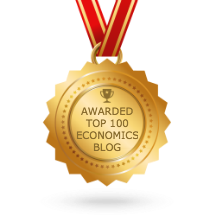Adam Smith talked about the invisible hand and how profit seeking firms would provide what the public wanted. But what about trying to make the world a better place? CVS lost $2 billion by not selling cigarettes. Walgreens says it isn’t a retailer’s job to keep shoppers from their vices.
Here is an excerpt from The Wealth of Nations found at The Library of Economics and Liberty.
"But the annual revenue of every society is always precisely equal to the exchangeable value of the whole annual produce of its industry, or rather is precisely the same thing with that exchangeable value. As every individual, therefore, endeavours as much as he can both to employ his capital in the support of domestic industry, and so to direct that industry that its produce may be of the greatest value; every individual necessarily labours to render the annual revenue of the society as great as he can. He generally, indeed, neither intends to promote the public interest, nor knows how much he is promoting it. By preferring the support of domestic to that of foreign industry, he intends only his own security; and by directing that industry in such a manner as its produce may be of the greatest value, he intends only his own gain, and he is in this, as in many other cases, led by an invisible hand to promote an end which was no part of his intention. Nor is it always the worse for the society that it was no part of it. By pursuing his own interest he frequently promotes that of the society more effectually than when he really intends to promote it. I have never known much good done by those who affected to trade for the public good. It is an affectation, indeed, not very common among merchants, and very few words need be employed in dissuading them from it."Now excerpts from the WSJ article:
"Three years after eliminating tobacco products from its shelves and adding “health” to its name, the company is taking more steps and moving most junk food away from the storefront, banning sales of low-protection sunscreens and eliminating foods containing artificial trans-fats.Here are some related posts:
The changes are part of CVS’s effort to stand apart from rivals by focusing on health-care goods and services"
"Walgreens Boots Alliance Inc. says it isn’t a retailer’s job to keep shoppers from their vices and that consumers should be able to make unhealthy choices if they want to. But like CVS, it is trying to boost sales by appealing to a more health-conscious shopper.
Walgreens sells cigarettes but offers smoking-cessation help in the form of specially trained pharmacists and quitting aids. It is keeping candy up front but has added fresh fruit and vegetables in other parts of the store. It also has a loyalty program that rewards shoppers with points for exercise and health monitoring that can be used on purchases.
“How do you still give customers the choice and not tell them what is good for them, but help them make healthier choices?” Walgreens Boots co-operating chief Alex Gourlay said in an interview. “There’s a level of making things available so it’s the customer’s choice, and there’s a level of incentivizing the customer.”"
"CVS’s latest moves are subtle. It will still sell candy bars at the front register but is moving the main snack aisle, with its bags of candies, sweets, chips and other munchies, to the middle of the store. Candy accounts for roughly 5% of overall drugstore revenue, according to Nielsen."
"“We make a distinction between indulgent products and damaging products,” said Judy Sansone, CVS’s chief merchant. “We are giving more healthy-choice options and making sure the customer can find them.”
The modifications aren’t expected to dent sales as did the tobacco ban, which the company said cost it $2 billion in annual revenue."
Can You Find Virtue by Investing in Vice?
What if companies pledge to adhere to social and environmental accountability guidelines?
Conspicuous Consumption, Conspicuous Virtue, Thorstein Veblen (and Adam Smith, too!)
For a humorous view of this issue see
A Snickers a Day Keeps the Doctor Away: Why does CVS want to make my migraine cures hard to find? by Joseph C. Sternberg of the WSJ:

